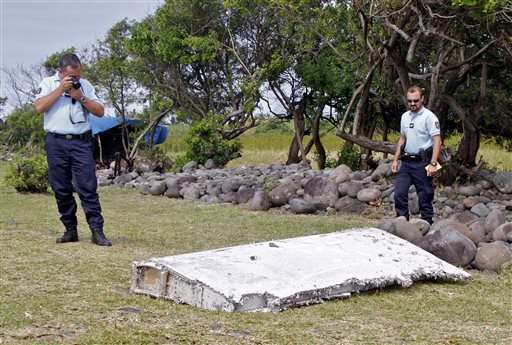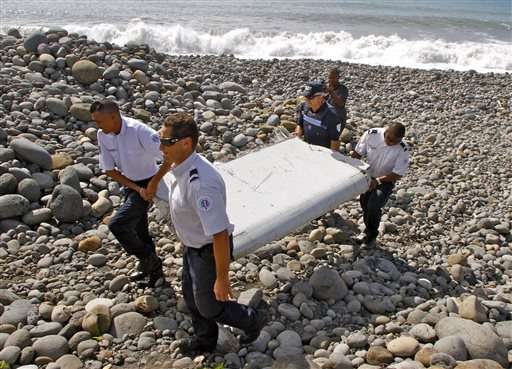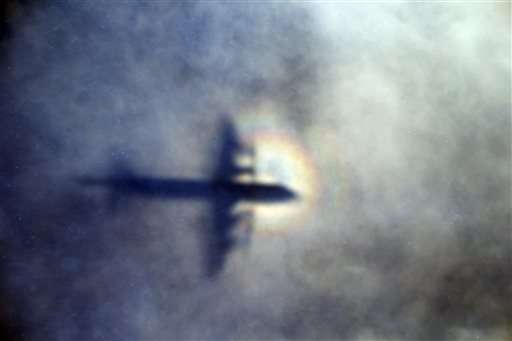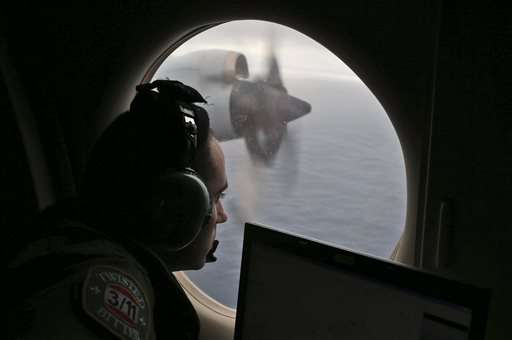Search for Malaysian jet refocuses in southern Indian Ocean

The deep sea hunt for the missing Malaysian airliner has been refocused on the southern reaches of an expansive search zone based on new analysis released on Thursday of the Boeing 777's final hours and how it might have plunged into the Indian Ocean with 239 people aboard after running out of fuel.
Searchers have been combing a 120,000-square-kilometer (46,000-square-mile) expanse of the Indian Ocean since October last year but have yet to turn up any trace of Malaysia Airlines Flight 370.
A wing flap found in July on the other side of the Indian Ocean when it washed up on remote Reunion Island is the only debris recovered.
The new analysis by a Defense Department agency confirmed "the highest probability" the final resting place for the plane was within the southern end of the search zone.
Two ships towing side-scan sonar have continued the search during the harsh southern hemisphere winter months. A third ship will join the search in the new priority area on Saturday, said Australian Transport Safety Bureau chief commissioner Martin Dolan, who runs the search on behalf of Malaysia.
The latest ship is equipped with a video camera inside an underwater unmanned submarine that can examine rough terrain and objects of interest detected by sonar that require a closer look.
A Chinese ship will join the search in late January equipped with Synthetic Aperture Sonar, state of the art technology that provides higher resolution images than the standard sonar now being used, Dolan said.
Some experts have been critical that the sonar was not used throughout the search and have questioned whether wreckage might have already been overlooked.
Dolan said about 4 percent of the area already searched would have to be searched again because of gaps in the sonar mapping and because some objects that had been detected could not yet be ruled out.

About 54,000 square kilometers (21,000 square miles) of the 98,000 square kilometers (38,000 square miles) of the highest-priority search zone have already been searched, the bureau's search director Peter Foley said. That area is 2,800 kilometers (1,700 miles) southwest of the Australian port of Fremantle.
Foley said the Synthetic Aperture Sonar and the camera would be used to examine a trench that runs north-south through the high priority zone, the Geelvinck Fracture Zone.
"It's very, very difficult terrain. Very steep drop offs. It's pretty bad," Foley said. "A lot of the area is hard and rocky and that's the hardest place to search."
The latest analysis by a team of mathematicians and a satellite expert will likely be the last of the scant satellite clues that have been used to track the airliner's final hours after it disappeared from radar on March 8, 2014, during a flight from Kuala Lumpur, Malaysia, to Beijing.
One of the engines sent an hourly signal to a satellite and a final signal when it apparently ran out of fuel.
Team leader Neil Gordon said dozens of flights around the world were tracked to fine tune the analysis of these engine signals and to test the accuracy of their methodology.
The methodology was also extensively tested against the actual routes flown by the doomed aircraft on four previous flights and by two different Boeing 777s. The routes calculated by the methodology proved close to the actual routes.
Flight 370 apparently ran out of fuel after flying for 7 hours and 38 minutes, with the left engine running for up to 15 minutes after the right engine failed.

Bureau accident investigator Alex Talberg said from that point, the airliner could have glided no further than 185 kilometers (115 miles) in the prevailing headwind of the time from an altitude of 10,000 meters (33,000 feet).
The search area was widened because of calculations by Boeing, flight simulations and evidence from previous accidents showed that the plane could have banked in a variety of ways and flown further off the automatic pilot course than had previously been thought, Talberg said. Analysis found it most likely turned to the east after running out of fuel.
Australia's Deputy Prime Minister Warren Truss said the new analysis gave authorities "real encouragement" they were on the right track
"We remain hopeful, indeed optimistic, that we will still locate the aircraft." Truss said.

As well as the ship, China will contribute 20 million Australian dollars ($14.6 million) to the search effort, marking its first financial contribution.
In total, the search is expected to cost AU$180 million, with Australia contributing AU$60 million and Malaysia contributing AU$100 million, Truss said.
Authorities are baffled by how and why Flight 370 disappeared. Among those who died were 153 Chinese nationals.

© 2015 The Associated Press. All rights reserved.




















